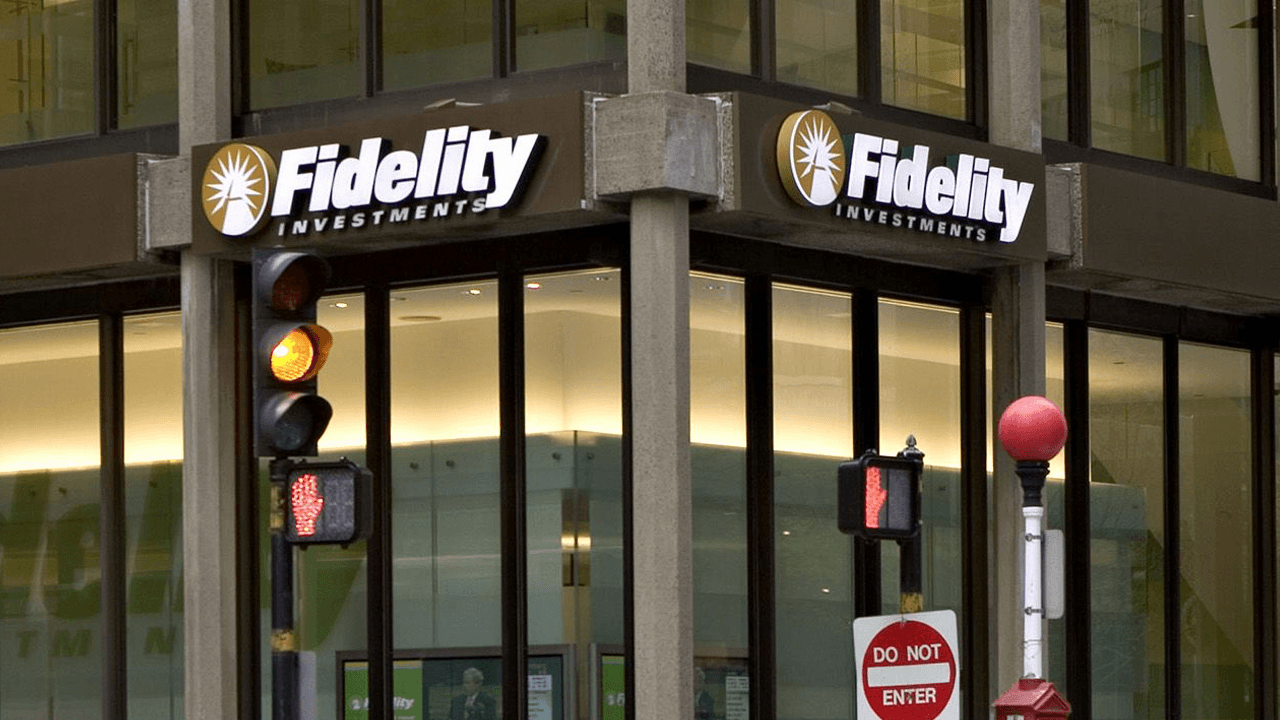How Fidelity’s Tokenized U.S. Treasuries Fund on Ethereum Changes Institutional Access

Fidelity’s launch of the Fidelity Digital Interest Token (FDIT) on Ethereum marks a pivotal moment for institutional access to U. S. Treasuries. As one of the world’s largest asset managers, Fidelity is leveraging blockchain technology to bridge the gap between traditional fixed income and digital finance. The FDIT, structured as an ERC-20 token, offers direct exposure to U. S. Treasury securities with operational efficiency and transparency that legacy systems simply cannot match.
Tokenized US Treasuries on Ethereum: A Macro Shift
The global market for tokenized U. S. Treasuries has exploded past $7.3 billion in 2025, reflecting surging demand from institutions seeking stable yield and real-time settlement. Fidelity’s FDIT stands out by offering 0.20% fees, continuous liquidity, and on-chain transferability, features that are rapidly becoming table stakes as tokenized fixed income investing matures.
Unlike conventional money market funds, FDIT enables 24/7 access via Ethereum’s decentralized infrastructure, reducing reliance on intermediaries and cutting settlement times from days to minutes. This operational leap is particularly significant for asset managers and treasurers who must navigate volatile macro conditions and increasingly complex liquidity requirements.
How Fidelity’s FDIT Enhances Institutional Access
The core innovation behind FDIT is its ability to provide regulated exposure to government-backed assets through programmable tokens. Each FDIT represents a share in the underlying Fidelity Treasury Digital Fund (FYOXX), which invests primarily in U. S. Treasury securities and cash equivalents, delivering both safety and yield within a digitally native wrapper.
- Transparency: All transactions are recorded on Ethereum’s public ledger, providing auditable proof of ownership and transfer history.
- Liquidity: On-chain tokens can be traded peer-to-peer or integrated with DeFi platforms, broadening potential exit avenues for large holders.
- Cost Efficiency: By automating processes via smart contracts, institutions reduce back-office friction and lower operational costs compared to legacy custody networks.
This evolution isn’t just about technology, it’s about meeting institutional mandates for risk management while unlocking new efficiencies across the investment lifecycle.
The Competitive Landscape: BlackRock, Franklin Templeton, and Beyond
Fidelity’s move comes amid intensifying competition among global asset managers racing to tokenize traditional securities. BlackRock and Franklin Templeton have also launched blockchain-based funds targeting the same market segment, yet Fidelity’s scale, brand trust, and integration with existing treasury operations set it apart as a bellwether for mainstream adoption.
The arrival of massive players in this space signals a structural shift: what was once a niche experiment has become a strategic imperative for institutions managing hundreds of billions in short-term assets. The interoperability of ERC-20 tokens with emerging DeFi protocols hints at future synergies, such as collateralization or automated liquidity management, that could further transform how institutions approach fixed income allocation.
Ethereum (ETH) Price Prediction 2026-2031: Institutional Adoption & Tokenization Impact
ETH price scenarios reflect the transformative impact of tokenized Treasuries, institutional inflows, and evolving blockchain use cases. Predictions incorporate both bullish and bearish macro outcomes, regulatory dynamics, and competition.
| Year | Minimum Price | Average Price | Maximum Price | % Change (Avg, YoY) | Market Scenario Insight |
|---|---|---|---|---|---|
| 2026 | $3,200 | $4,700 | $6,300 | +19% | Institutions continue tokenized asset adoption; moderate global growth in DeFi and stable macro environment. |
| 2027 | $3,800 | $5,600 | $8,200 | +19% | ETH benefits from further tokenization (real estate, bonds), but faces increased regulatory scrutiny and competition from L2s. |
| 2028 | $4,300 | $6,500 | $10,000 | +16% | Regulatory clarity in major markets; corporate and government tokenization pilots expand. ETH scaling upgrades improve user experience. |
| 2029 | $4,800 | $7,800 | $13,500 | +20% | On-chain Treasuries and RWAs (Real World Assets) reach mainstream adoption. ETH cements position as institutional DeFi backbone. |
| 2030 | $5,400 | $9,300 | $16,800 | +19% | Institutional capital flows accelerate; ETH faces stiff competition from new L1s, but network effects and ecosystem depth sustain growth. |
| 2031 | $5,900 | $10,800 | $20,000 | +16% | Tokenized assets represent a large share of global finance. ETH’s role as settlement and collateral layer is reinforced, but volatility remains amid global macro shifts. |
Price Prediction Summary
Ethereum is positioned for strong growth through 2031, driven by institutional adoption of tokenized assets (like Fidelity’s FDIT), ongoing DeFi innovation, and network upgrades. While macro and regulatory risks persist, ETH’s integration into traditional finance and its role as a blockchain infrastructure leader support a bullish long-term outlook with realistic volatility and competition risks.
Key Factors Affecting Ethereum Price
- Institutional adoption of tokenized assets (Fidelity, BlackRock, Franklin Templeton) on Ethereum.
- Regulatory developments, especially in the US and EU, affecting DeFi and tokenization.
- Scalability improvements (Danksharding, L2 rollups) increasing throughput and reducing fees.
- Competition from alternative L1s (Solana, Sui, Avalanche) and Ethereum L2s.
- Integration of real-world assets (RWAs) and new use cases for on-chain finance.
- Macro environment: global economic cycles, interest rate changes, and capital flows into crypto.
Disclaimer: Cryptocurrency price predictions are speculative and based on current market analysis.
Actual prices may vary significantly due to market volatility, regulatory changes, and other factors.
Always do your own research before making investment decisions.
Real-Time Market Context
The current Ethereum price sits at $3,947.23, reflecting its ongoing role as the preferred settlement layer for institutional-grade digital assets like FDIT. As more treasury products migrate on-chain, Ethereum’s network effects are likely to deepen, reinforcing its position at the heart of programmable finance infrastructure.
With the tokenized U. S. Treasuries market now exceeding $7.3 billion, the momentum behind on-chain fixed income is unmistakable. Fidelity’s FDIT fund is not just another product launch, it’s a signpost for how institutional capital will increasingly demand programmable, transparent, and instantly accessible exposure to government debt. As more asset managers enter the space, the standards set by Fidelity, low fees, robust compliance, and seamless integration with existing treasury workflows, will likely become the benchmark for future offerings.

For institutional investors, several practical implications emerge from this shift:
Key Benefits of Tokenized US Treasuries for Institutions
-

24/7 Liquidity and Faster Settlement: Tokenized U.S. Treasuries like Fidelity’s FDIT on Ethereum enable institutional investors to transact and settle positions at any time, reducing reliance on traditional market hours and intermediaries.
-

Enhanced Transparency and Auditability: Ownership and transactions are recorded on the Ethereum blockchain, providing verifiable, transparent records that support compliance and auditing for institutional portfolios.
-

Cost Efficiency Through Blockchain: By leveraging smart contracts and automated processes, tokenized funds reduce operational costs and settlement times compared to legacy financial systems.
-

Improved Liquidity Options: Tokenization allows for easier transfer of fund shares and potential integration with decentralized finance (DeFi) platforms, broadening liquidity channels for institutions.
-

Direct Exposure to U.S. Treasuries with Digital Flexibility: Each FDIT token represents a share in the Fidelity Treasury Digital Fund (FYOXX), combining the safety of government-backed assets with the programmability and accessibility of digital tokens.
-

Broader Market Participation and Accessibility: The on-chain structure lowers barriers to entry, allowing a wider range of institutional investors to access U.S. Treasuries via digital wallets and blockchain infrastructure.
First, tokenization addresses longstanding pain points in traditional bond markets, namely, limited trading hours and opaque settlement chains. With FDIT on Ethereum, institutions can rebalance or deploy liquidity at any hour, a critical advantage in volatile macro environments where flexibility is paramount.
Second, programmable assets like FDIT unlock new risk management strategies. For example, treasurers can automate compliance checks or collateral calls via smart contracts, reducing operational risk and manual intervention. This is especially relevant as regulatory frameworks evolve to accommodate digital securities without sacrificing investor protections.
Risks and Considerations for Institutional Allocators
No innovation comes without trade-offs. While FDIT’s structure offers significant benefits in terms of transparency and speed, it also introduces new dimensions of risk that must be carefully managed:
- Smart contract vulnerabilities: Although audited by leading firms, blockchain code is not immune to bugs or exploits.
- Regulatory clarity: The legal treatment of tokenized funds continues to evolve across jurisdictions; institutions must monitor developments closely.
- Ethereum network risks: Congestion or high gas fees could temporarily impact transfer speeds or cost efficiency during periods of extreme volatility.
This underscores the importance of disciplined due diligence and robust operational controls when integrating tokenized assets into large-scale portfolios.
Looking Ahead: The Future of Fixed Income Allocation
The rapid adoption of products like FDIT signals that we are entering a new era where digital rails underpin even the most conservative segments of capital markets. As programmable money meets sovereign debt at scale, expect further innovation in areas such as automated yield optimization, cross-border settlement, and composable financial products that integrate both traditional and decentralized finance primitives.
The macro backdrop, characterized by persistent inflation uncertainty and shifting central bank policies, only heightens the appeal of liquid, transparent instruments like tokenized treasuries. For allocators seeking both safety and agility in their fixed income sleeve, on-chain solutions are no longer fringe experiments but essential tools for modern portfolio construction.
The coming quarters will test how quickly institutions adapt their infrastructure and risk frameworks to fully exploit these new capabilities. Yet one thing is clear: with Ethereum priced at $3,947.23, its role as a backbone for regulated digital assets has never been more central. For those navigating this transformation, or seeking deeper analysis, the evolving story of institutional access to tokenized treasuries is only just beginning. For further insights into how these developments are reshaping fixed income investing at scale, explore our full coverage at this resource.







